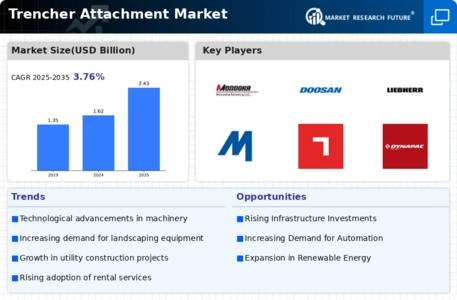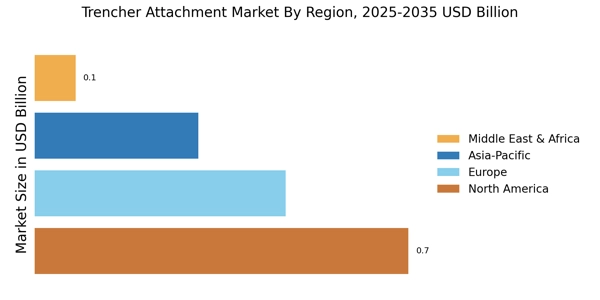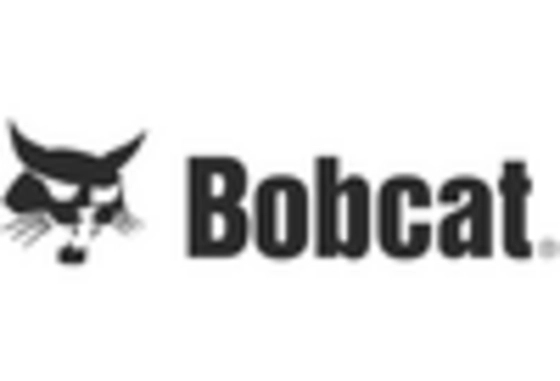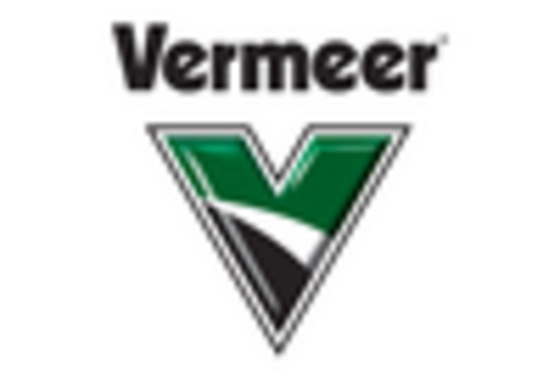Rising Infrastructure Development
The Trencher Attachment Market is significantly influenced by the ongoing rise in infrastructure development projects. Governments and private sectors are investing heavily in the construction of roads, bridges, and utilities, which necessitates efficient trenching solutions. In recent years, the demand for trencher attachments has surged, with the market expected to reach a valuation of USD 1.2 billion by 2026. This growth is attributed to the need for reliable and efficient equipment that can handle various soil conditions and project scales. As urbanization continues to increase, the demand for trenching equipment is likely to remain robust, positioning the trencher attachment market as a critical player in the construction and infrastructure sectors.
Growing Adoption of Rental Services
The Trencher Attachment Market is also being shaped by the growing adoption of rental services among construction companies. Many firms are opting to rent trencher attachments rather than purchase them outright, as this approach allows for greater flexibility and cost savings. The rental market for construction equipment, including trenchers, is expected to expand significantly, with a projected growth rate of around 7% annually. This trend is particularly appealing to smaller contractors who may not have the capital to invest in expensive equipment. As the rental market flourishes, it is likely to drive demand for trencher attachments, thereby contributing to the overall growth of the industry.
Increased Focus on Utility Installation
The Trencher Attachment Market is witnessing a heightened focus on utility installation, particularly in the telecommunications and energy sectors. The expansion of fiber optic networks and renewable energy projects has created a substantial demand for trenching solutions. As utility companies strive to meet the growing energy and communication needs, trencher attachments are becoming indispensable tools for efficient installation. The market is projected to grow as utility providers seek to enhance their operational efficiency and reduce installation times. This trend indicates a promising future for the trencher attachment market, as it aligns with the global push for improved infrastructure and utility services.
Technological Advancements in Equipment
The Trencher Attachment Market is experiencing a notable shift due to rapid technological advancements. Innovations in hydraulic systems and precision engineering have enhanced the efficiency and effectiveness of trenching operations. For instance, the integration of GPS technology allows for more accurate trench placement, reducing waste management and labor costs. As a result, companies are increasingly investing in advanced trencher attachments to improve productivity. The market for trencher attachments is projected to grow at a compound annual growth rate of approximately 5.2% over the next few years, driven by these technological improvements. Furthermore, the introduction of electric and hybrid trenchers is likely to appeal to environmentally conscious consumers, further expanding the market's reach.
Environmental Regulations and Sustainability
The Trencher Attachment Market is increasingly influenced by environmental regulations and sustainability initiatives. As governments worldwide implement stricter environmental policies, construction companies are compelled to adopt more sustainable practices. Trencher attachments that minimize soil disruption and reduce emissions are becoming more desirable. The market is responding to this demand by developing eco-friendly trenching solutions that align with sustainability goals. This shift not only helps companies comply with regulations but also enhances their reputation among environmentally conscious consumers. As sustainability becomes a priority in construction, the trencher attachment market is likely to see a rise in demand for innovative, environmentally friendly products.


















Leave a Comment